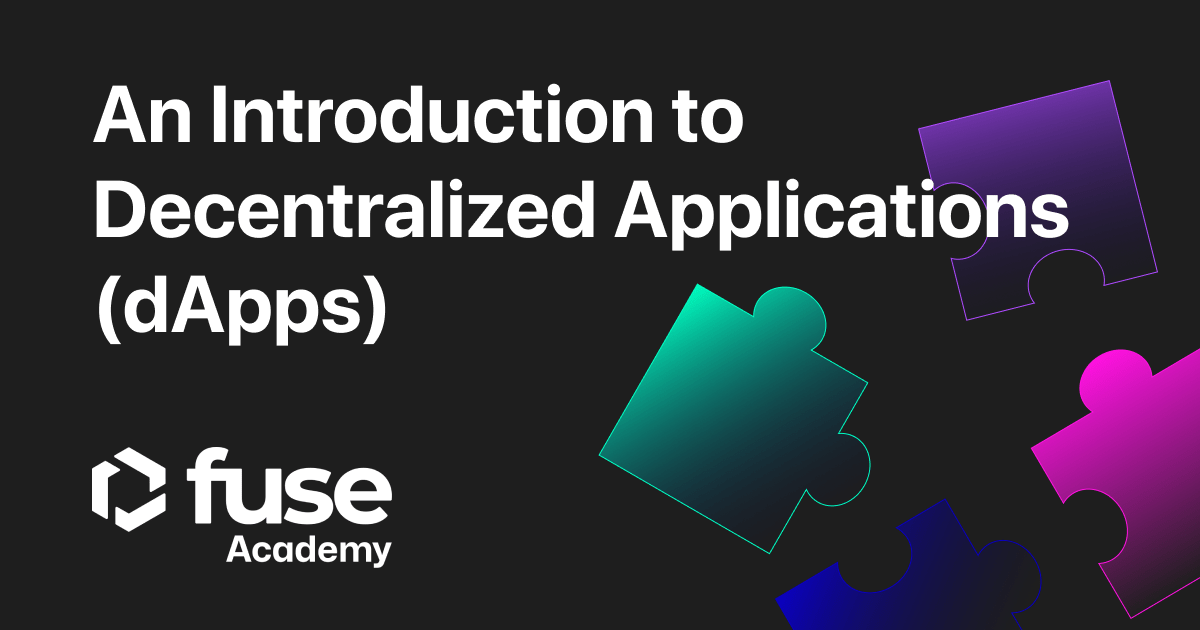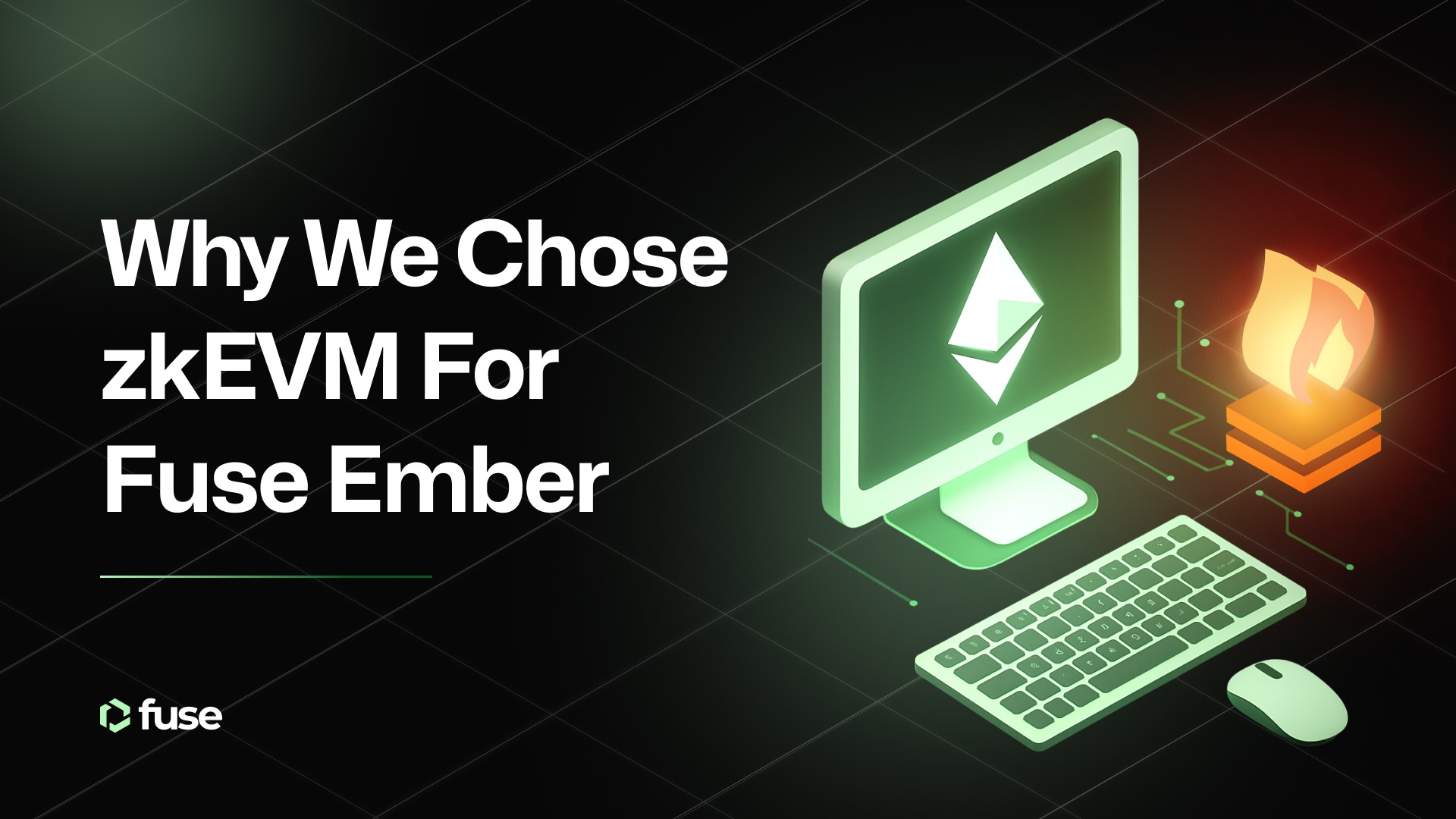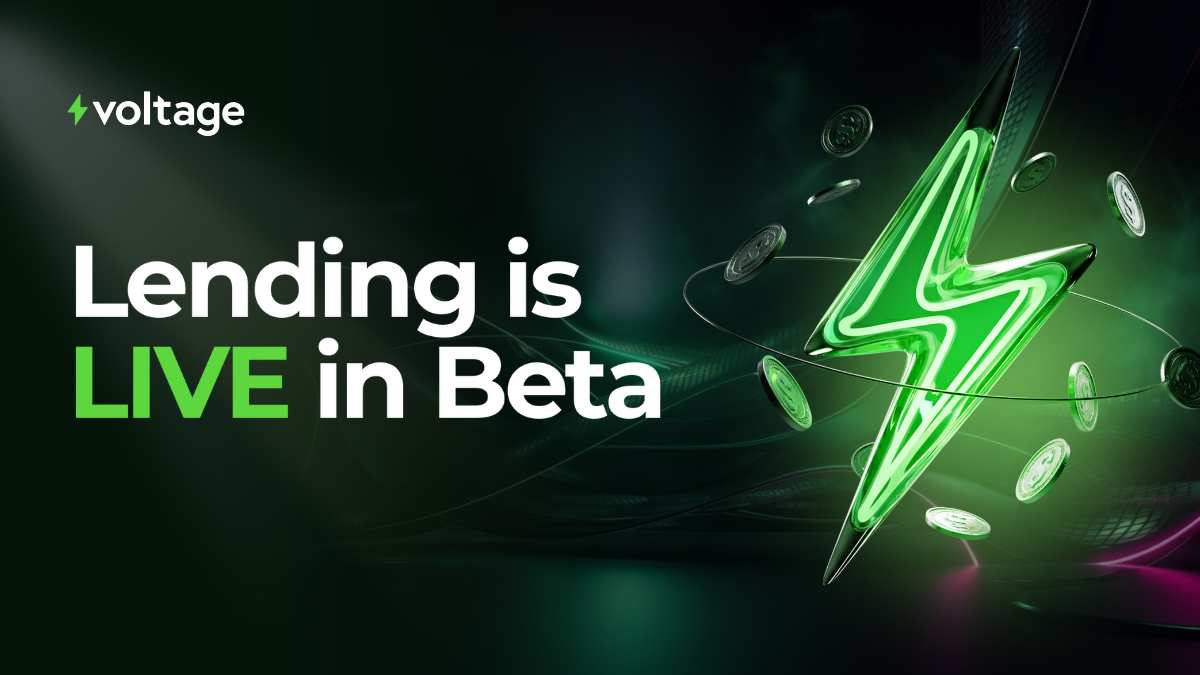A decentralized application (dApp) runs on a decentralized network and combines a smart contract and a front-end user interface. On Fuse, smart contracts are accessible and transparent – like open APIs – so your dApp can include a smart contract written by someone else.
Apps have become an integral part of our lives, but what happens when they run on a decentralized network instead of a centralized one? This is where decentralized applications (dApps) come in. This article provides an overview of dApps, how they work, and their benefits.
Two crucial prerequisites to understanding dApps are a basic understanding of a blockchain and smart contracts.
- What is a blockchain?
- What is a smart contract?
- What is a dApp?
- Different types of dApps
- How to connect and disconnect from dApps
- >> Further reading on blockchain wallets
- Benefits and drawbacks of dApps
- Tools for creating dApps
What is a blockchain?
A blockchain is a digital ledger of transactions verified and maintained by a network of computers. Each set of records is linked to the previous block, creating a chain of blocks. The blockchain ensures data accuracy and makes tampering impossible. Nodes maintaining the blockchain gain rewards through mining or transaction fees, and leading and optimal blockchains are fully decentralized.
What is a smart contract?
To present dapps, we need to introduce smart contracts. These are dApp’s backend, and put simply, a smart contract is a code that lives on the blockchain and runs precisely as programmed. Once smart contracts are deployed on the network, you can’t change them.
dApps can be decentralized because they are controlled by the logic written into the contract, not by an individual or company.
What is a dApp?
A decentralized application is an app that runs on a decentralized network or blockchain. It is similar to a regular app on your phone or computer, but any person or entity does not centrally control it. This is because dApps operate from a peer-to-peer network, not a single server. dApps are built on decentralized networks, such as the Fuse blockchain. When you use a dapp, you interact with the decentralized network it is built on.
Some leading examples of dApps you may have heard of but have yet to interact with are the Uniswap DEX, Aave, Splinterlands, and Voltage Finance. These are just a few of the thousands of dApps running on the many blockchain networks. Like apps, dApps cater to different needs, i.e., finance, gaming, social media, etc.
Different types of dApps
Decentralized applications, or dApps, are driving the adoption of blockchain technology by offering unique features that traditional applications cannot provide. There are several types of dApps, each offering distinct benefits to users.
Gaming dApps are the most popular type of dApp regarding daily active users and the number of transactions processed, with a wide range of Web3 games available on various blockchain networks. These dApps leverage the blockchain’s transparency, trustlessness, and immutability to offer gamers a better experience. Players can own their in-game items, participate in game decisions, and profit from their performance. Splinterlands, Axie Infinity, Alien Worlds, and Upland are among the most popular gaming dApps.
Finance dApps, or DeFi dApps, offer users decentralized alternatives to traditional financial services. Built on blockchains like Fuse, Ethereum, and Polygon, these dApps use smart contracts to automate financial transactions. DeFi dApps allow users to get loans, trade cryptocurrencies, and exchange assets without relying on traditional financial institutions. PancakeSwap, MetaMask, Uniswap, and Voltage are among the most popular DeFi dApps.

Gambling dApps are also gaining popularity as they offer a decentralized alternative to traditional online casinos. These dApps use the blockchain to create provably fair games, where players can bet on the outcome of an event or the results of real-world events, such as sports matches. Serious Dice, Pool Together, and BetSwirl are some of the most used gambling dApps.
Finally, NFT marketplace dApps allow users to buy, sell, or trade non-fungible tokens (NFTs). These dApps use the blockchain to verify the authenticity of NFTs and provide a secure way to trade them. With the recent NFT boom, these dApps have become increasingly popular and are now available in various blockchains. OpenSea, Artrific, Looksrare, Magic Eden, and Atomic Market are some of the most used NFT marketplace dApps.
With dApps gaining traction, they can transform how we interact with the internet and our digital assets.
How to connect and disconnect from dApps
To connect to dApps and start using them, first, you need to install a blockchain wallet such as MetaMask. Once set up, one of MetaMask’s most compelling features is its ability to connect to decentralized applications. To interact with the functionality of that network, you need to have a wallet connected to the dApp. That’s where MetaMask comes in.
Many websites with dApp functionality will have a button on the site that says ‘Connect wallet,’ or ‘Connect to dapp’, or even just ‘Launch app.’ Clicking the correct button should launch a set of interactions that end up with your MetaMask wallet connected to the dApp you’re on.

Certain types of transactions require granting a dApp’s smart contract permission to access your funds and, in many cases, infinite amounts of your funds. Unfortunately, token approval scams are one of the most common methods through which Web3 users are tricked, so it pays to educate yourself on contract revoking and safe dApp connection before diving into Web3.
Further reading:
- Add Fuse Network to Metamask
- Custodial & Non-custodial Wallets: What’s the difference?
- Revoking Smart Contracts Allowances/Token Approvals
- How to Keep Your Web3 Wallet Safe
Benefits and drawbacks of dApps
dApp development offers numerous benefits, such as zero downtime, privacy, resistance to censorship, complete data integrity, and trustless computation/verifiable behavior. In addition, once deployed on the blockchain, smart contracts ensure the network is always available and malicious actors cannot launch targeted attacks.
Users don’t need to provide real-world identity, and no single entity can block transactions or data on the blockchain. Furthermore, the data is immutable and indisputable, thanks to cryptographic primitives, and smart contracts can be analyzed and are guaranteed to execute in predictable ways without the need to trust a central authority.
Developing a decentralized application has its drawbacks. Firstly, maintaining the decentralized app can be challenging as the code and data stored on the blockchain are difficult to modify. Secondly, there is a significant performance overhead, and scaling is problematic because each node needs to run and keep every transaction. To combat this, some dApps do an amount of work off-chain.
Network congestion can also occur when one dApp consumes too many resources, resulting in a backlog of unconfirmed transactions and, on Ethereum, higher gas fees. Moreover, it may be harder to engineer user-friendly experiences, and end-users may need help interacting securely with the blockchain.
Tools to create decentralized apps
Remix IDE: It’s easy to deploy on Fuse with Remix. Choose injected Web3 and add the Fuse custom RPC to your Metamask.
JustSmartContracts: another smart contract deployment tool for EVM chains.
OpenZeppelin Defender: Manage smart contract administration, including access controls, upgrades, and pausing.
For comprehensive guides, tools, and step-by-step directions, visit our Developer Docs. If you’re a project or team looking to apply for funding, please visit our Fuse Ignite funding program.
.svg)
.svg)












